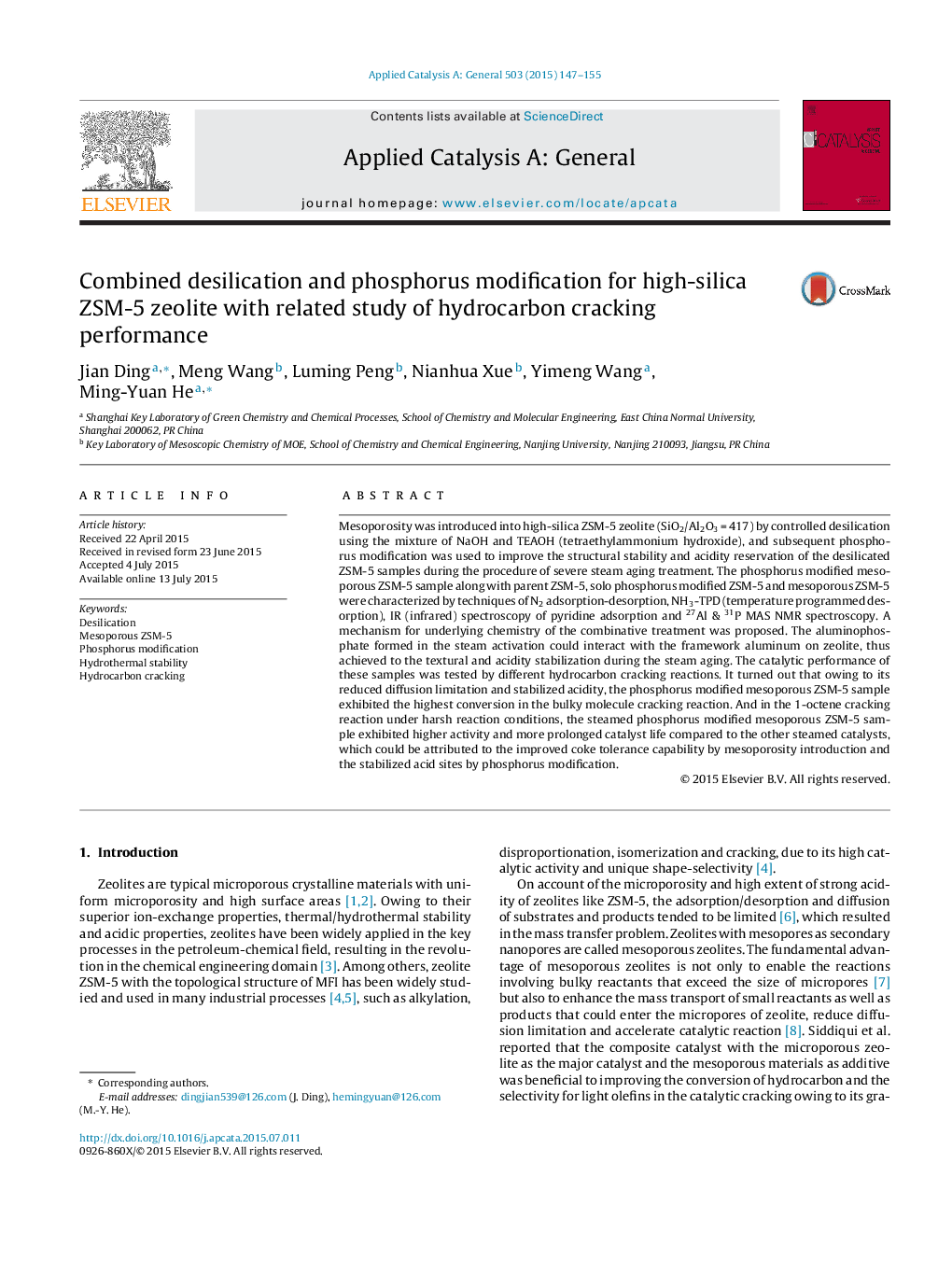| Article ID | Journal | Published Year | Pages | File Type |
|---|---|---|---|---|
| 39256 | Applied Catalysis A: General | 2015 | 9 Pages |
•Combined desilication and phosphorus modification for high-silica ZSM-5 zeolite was successfully realized.•The hydrothermal stability for both mesoporous structure and zeolitic acidity is significantly improved by phosphorus stabilization.•The sample with combinative treatment exhibits the best catalytic performance in kinds of hydrocarbon cracking reactions.•A mechanism for underlying chemistry of the stabilization treatment is proposed.
Mesoporosity was introduced into high-silica ZSM-5 zeolite (SiO2/Al2O3 = 417) by controlled desilication using the mixture of NaOH and TEAOH (tetraethylammonium hydroxide), and subsequent phosphorus modification was used to improve the structural stability and acidity reservation of the desilicated ZSM-5 samples during the procedure of severe steam aging treatment. The phosphorus modified mesoporous ZSM-5 sample along with parent ZSM-5, solo phosphorus modified ZSM-5 and mesoporous ZSM-5 were characterized by techniques of N2 adsorption-desorption, NH3-TPD (temperature programmed desorption), IR (infrared) spectroscopy of pyridine adsorption and 27Al & 31P MAS NMR spectroscopy. A mechanism for underlying chemistry of the combinative treatment was proposed. The aluminophosphate formed in the steam activation could interact with the framework aluminum on zeolite, thus achieved to the textural and acidity stabilization during the steam aging. The catalytic performance of these samples was tested by different hydrocarbon cracking reactions. It turned out that owing to its reduced diffusion limitation and stabilized acidity, the phosphorus modified mesoporous ZSM-5 sample exhibited the highest conversion in the bulky molecule cracking reaction. And in the 1-octene cracking reaction under harsh reaction conditions, the steamed phosphorus modified mesoporous ZSM-5 sample exhibited higher activity and more prolonged catalyst life compared to the other steamed catalysts, which could be attributed to the improved coke tolerance capability by mesoporosity introduction and the stabilized acid sites by phosphorus modification.
Graphical abstractFigure optionsDownload full-size imageDownload high-quality image (165 K)Download as PowerPoint slide
